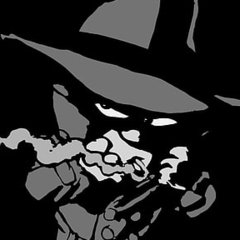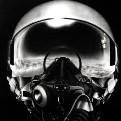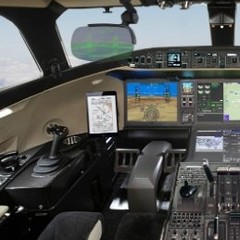-
Posts
4642 -
Joined
-
Last visited
-
Days Won
8
About cfrag
- Birthday 11/30/1965
Personal Information
-
Flight Simulators
All
-
Location
Switzerland
-
Interests
Ethics
Recent Profile Visitors
The recent visitors block is disabled and is not being shown to other users.
-
That may have been a side effect of sg - a DCS synchronization bug that is worked around by putting stopGapGUI on the server (and only the server). You know that you should not provide me with that kind of intel, right? You have given me a ton of evil ideas to put into upcoming versions of Expansion -- Oh, and my compliments to Magic, wrangling the mission and the su-25 nose-jobs. Having real-life command authority on your side definitely is a boon
-

Which royalty free Music do you use?
cfrag replied to Rudel_chw's topic in User Created Missions General
Most of my audio assets come from here: https://assetstore.unity.com/audio You may need to become a member, but IIRC you can do that for free, and Unity is a first-tier business. -
I'd stop right there. Speculating on a speculation does not make it better. It's fun, sure, and we can't manufacture facts from speculation. Uh. Methinks you should put an "I think" somewhere in your assertions to make clear that you, too, are not talking about facts. So you believe that at that crucial point, the video is misleading or (one of the many other possibilities) you do not follow the reasoning. For someone who claims knowledge of the industry this is a jaw-droppingly silly assertion and documents that you seem to have no understanding of the industry at all. Neither consoles and their industry, nor console titles and entertainment titles or how they are developed. If you develop a module or other DLC for a title, you do not suddenly gain the ability (nor have the code) to replicate the environs that your artifact (mod/dlc) runs in. Just because you can create a plug-in for, say, Photoshop you do not suddenly have the ability to create your own image manipulation suite. What you allege may have been a case here is not feasible. We don't know the details, but I think it exceedingly unlikely that RAZ was alleged to have written their own sim engine, much less that they have done so based on knowledge gleaned from the SDK. Agreed. And I do not think that anyone has claimed that. I think this may be based on a spectacularly wrong interpretation of yours. Allegedly, the discussion is about creating a plug-in based on tech for one of ED's products (DCS) and then selling that plug-in to a customer as a plug-in for another ED product which they were not licensed to do. I'm sure that there is more to this, and outside the legal proceedings surrounding this, nobody knowns. I'm quite sure that nobody accused RAZ of 'white-rooming' ore reverse-engineering the sim engine itself. I fail to see how you may have arrived at that conclusion. Agreed. And I do not think that this particular brouhaha is about that, that anyone alleges RAZ of trying to build their own sim. I believe (not having access to any facts about this) that the spat is about RAZ applying knowledge gained while producing for one of ED licensed products (DCS), they used that knowledge to create a plug-in for another ED product that they are not licensed for. If that can be proven, I agree that RAZ could be in breach of contract (depending entirely on the contract that they did sign). Even if they are not in breach of contract, it's rarely a good idea to try and sell an accessory to a product where the manufacturer of that product is hostile to your business. The entire business plan can collapse with a simple unfriendly patch or modification. Let us hope that there will be some kind of resolution that is helpful for us customers. At this point, the entire proceedings -- and the fact that we know about an internal spat -- is incredibly unprofessional and childish, and IMHO wreaks havoc on both companies' reputation. Which is why I think we should not talk about this - while ignoring my own advice.
-

Which royalty free Music do you use?
cfrag replied to Rudel_chw's topic in User Created Missions General
I know that you are asking for royalty free music, and although my advice does not cover that, please hear me out. I'm using licensed music and audio for my missions - there is a lot of great aural artwork available, and I support artists by licensing their work, provided that I can use it in my works without further cost. So, for a couple of bucks I can add great audio to my missions, and the artist can get something. I currently own multiple audio libraries (i.e. GB of audio) that I own licenses to include in my missions, and I think it was well worth the cost (big libraries are around USD 20 with unlimited uses). Hailing from the game dev side of the universe, I usually look at the artwork stores in Unity and Unreal first, plus (occasionally) commission work from friends (Torsten's Axe in my "A-10 joyride" mission for example). So, please don't only look at royalty free stuff, also look if acquiring a license for audio may be inside your abilities. It's often worth the shot if you have the means, and the licensing terms are agreeable. -
In general, using AI for creating DCS mission scripts at this point in time only works if you already know mission scripting very well. AI do not (yet) understand context, so they are offering up pieces of information filtered through your question. If you know DCS mission scripting well, that can help a lot since you can take the idea presented in the code snippets and make a working whole out of it. If you do not know DCS mission scripting at all, you will not understand what the AI presents you, and it won't work. Now, there are multiple other things that you may want to look at and clear up: You seem to conflate creating and editing a mission - which implies that you first want to create a mission, and then, based on that mission, want to refine the results by editing it. This is of course a sensible approach; still you may want to explore simply editing an existing (created by some other author) mission to discover how the mission was put together, and to learn the tricks of the trade. That's how I started creating missions, and I saved myself a lot of grief learning mission crafting that way. Using an AI chat bot for this is something I haven't tried - maybe it helps have an AI dissect a mission but since AI can't yet understand context, I'm dubious about the prospects. Finally, you seem to have concluded that you need mission scripting to achieve the goals that you envision for your mission. Using AI to tie together a mission and mission scripting *requires* that an AI understands the context of both your question and the missions that it learned from. This is impossible today. At best you can get AI to provide hints on how to script a certain element of a mission, tying these things together is beyond today's AI competencies.
-
Hmmm. It could be advantageous to think this further through... The CSAR pilot side of this indeed is interesting, and a CSAR mission to evacuate someone can be a great mission. Being the evacuee, though - not so much. You essentially sit around, and wait - say 40 minutes for the rescue helo(s) to arrive (tbh, 40 minutes is unrealistically short). You then get on board, and sit around for another 40 minutes while the helo is RTBing. You may want to pick up a hobby like watching paint dry to train for those missions. Also, the FPS aspect of DCS is quite underdeveloped, and I think it will stay that way for a long time. So you are likely to sit around in really bad scenery for 40 minutes to be picked up and shipped home. Oh, and if present-day enemy DCS AI spots you (a Soldier AK), they are likely to snipe you from 1 mile away. Good times.
-

DML - Mission Creation Toolbox [no Lua required]
cfrag replied to cfrag's topic in Scripting Tips, Tricks & Issues
It was. The folder name for the theatre map doesn't match up with the theatre name, so I had to patch twn for this. It's a simple patch and now should work: twn.lua -
Since all good stories depend on a great villain (even if the real-world persona is more of a wet towel), that role would go to Alan Rickman - the "it's amazing I'm sane" Prince John from Prince of Thieves or "We do it the hard way" Hans Gruber from Die Hard -- kind of irresistibly sinister-yet-fascinating antagonist. Since Alan is no longer with us, I'd also be happy with Gary Oldman's take. And since there are no heroes in this move - who cares about the rest?
-

DML - Mission Creation Toolbox [no Lua required]
cfrag replied to cfrag's topic in Scripting Tips, Tricks & Issues
Agreed. I've run across a similar issue with Nevada that has a non-ASCII character in a city's name that brought lua2json to a grinding halt. I'll investigate to see what may be the issue here, thanks! -
I don't get it. When did a poll ever solve or change something? Let's say I have a rabbit in my hand, and I let my audience vote if it was male of female. The poll shows 98% think it is a female rabbit. Does that change the facts? No, it only keeps the audience busy doing BS stuff like polls. We don't need polls. We need the people who are in responsible positions act - and act responsibly, maybe even in favour of their customers.
-

DML - Mission Creation Toolbox [no Lua required]
cfrag replied to cfrag's topic in Scripting Tips, Tricks & Issues
You control which helicopters are accepted for CSAR missions with the 'troopCarriers' attribute in the csarManagerConfig zone troopCarriers A list of helicopter types that are allowed to carry/rescue troops in this mission. Defaults to DCS Common’s list of troop carriers (which is usually Mi-8MT, UH-1H, Mi-24P), but you can provide your own list (for example to add non-official types). Example: “Mi-8MT, UH-1H, SA342Minigun” removes the Hind and adds the Gazelle in Minigun configuration to the list of legal troop carriers. Supports wildcard type endings: if a type ends on an asterisk (“*”) all types that match whatever precedes the asterisk are accepted. For example, “Mi-*” will match both “Mi-8T” and “Mi-24P”. You can supply the type ‘helos’ to allow all player helicopters (including unofficial Mods like Blackhawk) to carry troops. You can supply the type ‘any’ or ‘all’ to allow all player aircraft to carry troops. Default <none> (use dcsCommon’s list of troop carriers) Please be advised that the autoCSAR module does not provide the CSAR services, it merely automatically creates a CSAR mission for a pilot that successfully ejects. -
Is there any way of restricting access to certain parts of the F10 radio Menu. ie server admins using unit id or similar. So login with a password protected aircaft and get the full config menu under F10 ?
,
-

DML - Mission Creation Toolbox [no Lua required]
cfrag replied to cfrag's topic in Scripting Tips, Tricks & Issues
Can you (after removing all mods should they be in there) please allow me to look at the miz? The changes are new, and I'm sure I may have missed something. -
Hmmmm. I had a quick look at the miz that you kindly attached. Using Comms -> F10 Other->Kill does not kill anything You do not seem to be using DML to spawn the units. You are using RND to trigger a trigger rule that activates a late activation group. I recommend using a cloner for each, and trigger each of the cloners using RND. Although you can mix old-school trigger rules with DML, DML often has much better, easier tools ready for you to use.
- 1 reply
-
- mission editor
- dml
-
(and 2 more)
Tagged with:












.jpg1.thumb.jpg.cbfa7803fddfd5c2a86431fee2d62211.jpg)

